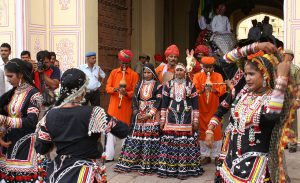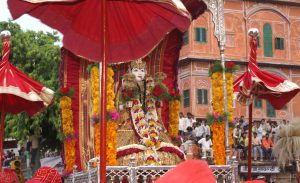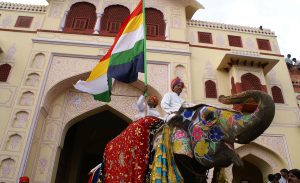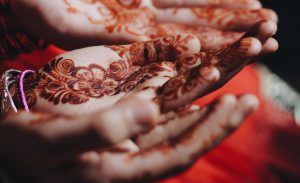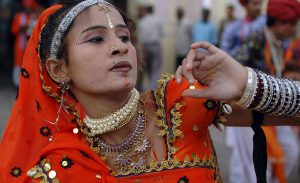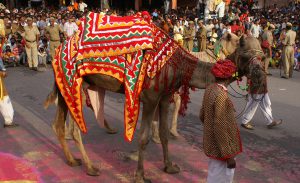
art of travel
Monthly Musing
Monsoon in Wayanad

Here are 4 compelling reasons to visit Kerala during the Monsoon – Ayurveda because the body pores are the most receptive to the therapies, the Harvest Festival of Onam for its sheer culinary delight, the Boat Races, the Water Olympics of God’s Own Country and Wayanad for its authentic local experiences.
THE LANDSCAPE AND PEOPLE
The drive to Wayanad from the coastal plains of Kozhikode past the little towns is uneventful till the lofty mountains make a sudden appearance, with their forbidding slopes rearing up into the clouds. And soon you start climbing on the road that snakes around many hairpin bends and over undulating slopes carpeted by verdant forest. This drive can be quite an adventure by itself if you get caught in a thunder storm. The sheets of rain defeat the most powerful windshield wipers and the mist swallows up the brightest of high beams. But then you pass the spectacular view point at Lakkidi and cross over into Wayanad and the landscape changes into neat tea gardens, and you realise that an idyllic and soothing paradise lies protected behind a ring of mountains.
And it is this ring of high mountains set so close to the Malabar Coast that shunts the mighty monsoon clouds into Wayanad to sustain a green paradise. The typical Wayanad rain starts with a thunderous assault but then quickly settles into a steady shower that keeps up for hours. This is just perfect, for the life giving water has the time to sink deep into the soil, as against a sudden thundershower that simply floods the valleys and erodes precious topsoil from the slopes. It is no wonder that through the years when Lakkidi recorded the heaviest annual rainfall in the country land slips on the steep slopes were rare.
By end of summer the trees shed their foliage and sprout new leaves and anxiously await the onset of rain. Intermittent showers start in May and build up into monsoon by mid-June, and the lush Wayanad landscape bursts to life. The skies turn from shades of sparkling blue to ominous slate-grey in the course of a few hours. Streams that spring up on every mountain slope turn into roaring demons and spectacular waterfalls while the placid central Wayanad rivers morph into frothing brown torrents. The rampart of mountains around Wayanad transforms into an amphitheatre where cloud and mist and the occasional sun beam throw into sharp relief the forested crags and clefts. The best spots to watch the show are the oft visited Lakkidi pass or the little known but more spectacular Palchuram pass or the charming road that leads off to Chooralmala.
For the agrarian culture of old Wayanad monsoon is the time to wrest with the earth and produce a large part of food to last the year. The traditional ways persist in the tribal lands of North Wayanad, where cattle harnessed to wooden ploughs are still preferred to more modern implements. Sowing and planting by the tribes are still ritualised, accompanied by age-old dances and songs. Soon the fields of mud brown turn into fields of emerald that stretch as far as the eye can see turn even the most taciturn into poets.
FOOD
The rains also bring changes in the cuisine. The gushing waters flooding the low lying paddy fields are rich with fattened river fish, like the famous Panamaram Mushi, and succulent crabs,

and these are source of culinary delight during the season. The methods employed for of catching these are equally delightful. One waits with a sickle or machete and hack at metre-long fish that flit across the flood waters. The expert crab catchers, typically womenfolk, deftly entice crabs from their tunnels and grab them with bare hands, and sometimes with a palm leaf snare.
MUD FOOTBALL
For sheer fun and novelty, nothing can beat the unique Wayanad pastime of mud football. Take a muddy paddy field, throw in a bunch of soccer crazed youth and a host of supporters on a lazy afternoon – and an exciting new sport is born. Mud football is as exciting for the participants as it is entertaining for the audience. Mud football tournaments during the monsoon are crowd pullers. The players wallow in shin deep mud, where every step takes enormous effort. They chase a soggy, heavy ball made even more so by the sticky mud. It is complete chaos and complete fun – for instance a powerful kick can land the attacker butt deep in mud and spray mud into the face of the defenders while the ball reluctantly hops all of six inches in any which direction. Participating in one of these is an experience that you will recount and chuckle about for a long time.
FOR TRAVELLERS
For the traveller seeking authentic local experiences, the season offers rich options. One can help a traditional farmer in ploughing, sowing and planting the paddy fields or perhaps, just watch him go about it. One can participate in a mud football match, or try your hand at fishing and crab-catching. One can explore the seasonal cuisines which range from river fish, crab or chicken smeared with jungle herbs, to bamboo shoot curry and delicious preparations based on tubers. One can also indulge at an occasional festival of jack fruit or bamboo delicacies conducted by local communities. Or one can simply curl up with a book with a mug of tea and a bowl of hot jackfruit chips at hand and watch the rains.
For the traveller seeking communion with nature or adventure there are a number of absolutely irresistible cycling and walking trails that wind through villages, fields, streams, temples, and wildlife areas and extend from a few hours to a few days. While the deep forest trails are closed for the monsoons the mountain trails are open, and they lead above the clouds to offer stunning views of fog covered plains.
Monsoon visitors to Wayanad have another favourite indulgence – entrusting their body and soul to one of the renowned Ayurveda treatment centres. The monsoon month of Karkkidakam, starting mid-July, is traditionally the best time to have Ayurveda treatments with the body at its most supple for massages and the skin at its most receptive to medicinal oils. Wayanad forests have been the favoured source of medicinal herbs from ancient times, and have spawned many excellent no frills Ayurveda centres and wellness resorts. Full Ayurveda courses lasts a week to a fortnight and are designed to relax, de-stress, and detox your body through daily therapies. For those without the luxury of time, a massage or two over a relaxed weekend can also work wonders.
What’s New
Stories from the Road
By Soma Paul, Product Manager, Destination Knowledge Centre
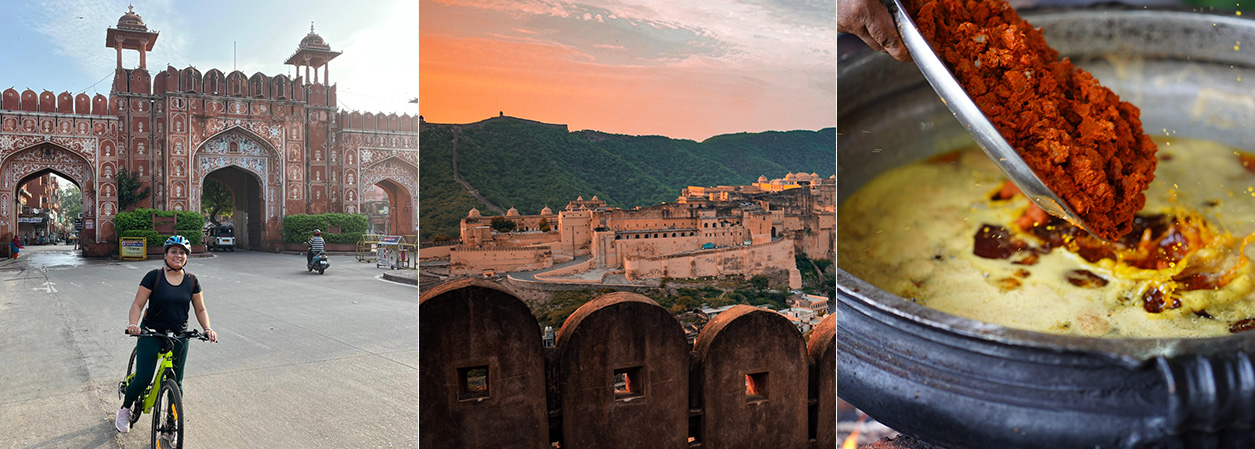
The Tale of Two Capitals
Tomes have been written about Jaipur, considered the first planned city of India but very little about Amber which served as the seat of power before Jaipur. The quaint town in the foothills of Amber Fort is full of beautiful temples, stepwells, and ruins of havelis. During my recent trip to Jaipur, I stayed at a 300-year-old Haveli with 6 lovingly restored rooms, cosy with all modern comforts and packed with plenty of Rajasthani colour and character. It was fascinating to wake up in the morning to observe Amber come to life, take a leisurely stroll to visit the temples, explore the magnificent Amber fort, spend time at the Anokhi Museum of Hand Printing – a textile museum dedicated to the art of block printing and to take a 4x 4 jeep ride through what was once an ancient trade route for a delicious home-cooked meal in a private farm. I absolutely loved the kite-making workshop with a master kite flyer at the terrace of the haveli. I strongly recommend dividing your time between the two capitals by spending one night in the historic town of Amber and two nights in the Pink City during a tour of Rajasthan.
Water Stories
Despite its tropical desert climate, I was surprised to know about the rich and diversified water culture of Rajasthan from some of the tours I experienced firsthand. It was fascinating to hear the stories of Rajasthan’s ancient water wisdom set against the backdrop of some of its famous historical landmarks. A tour of Rajasthan is a fantastic opportunity to understand the relationship between water and the history, culture, and creative spirit of the people of this state. A must do!
Tea Story
During my time in Jaipur, I discovered a place where one can savour some unusual tea flavours including a saffron tea brewed with full milk and saffron strands. Highly recommended during the sightseeing of Jaipur. Have a chai, take a break, and continue with the city tour.
From the Desert to the Kitchen
Despite its primarily arid climate and limited resources, the smorgasbord of gastronomic pleasures, both vegetarian and non-vegetarian, is a testimony to how inventive the people of Rajasthan are with their food. An age-old tradition amongst the women in the Rajput community of Rajasthan had led to a fine culinary practice in the region – the art of cooking meat outdoors by Rajput men. In the kitchen of every Rajput household there would be a shrine of the Goddess and a newly married woman spends a lot of time in the kitchen and is expected to do the daily rituals. It was because of this, Rajput women traditionally gave up eating meat once they got married. It’s not that meat isn’t cooked. When there are guests and meat needs to be cooked it is done

in an annexe close to the kitchen where separate utensils are provided. And you guessed it right; it was the menfolk of the family who would do the cooking. And the Banas, as Rajput men are lovingly called, are some of the finest cooks I have ever seen when it comes to meaty affairs. In fact, I am yet to meet a Rajput man who is a bad cook. Talk about cooking and particularly meat and their eyes light up just like my host in Jaipur who is into reviving the culinary tradition of game meat from the days of the yore when Rajput men went out for a hunt. Hunting is banned in Rajasthan and elsewhere in India, but the style of cooking that is centuries old is a treat to observe and so is the food. A great way to spend the evening in Jaipur and he is an expert in vegetarian delicacies too.
Deep Diving into the Culture of Jaipur
Due to the abundance of forts, palaces, and neighbourhood bazaars in Jaipur, one can still witness remnants of the splendour and allure of the past. I realised that the best way to experience that is to get off the vehicle and hop on an e-rickshaw or pedal through the narrow alleys, or on foot. These carefully crafted tours that I experienced firsthand are a great way to know more about Jaipur’s traditional way of life, its people, and much more. There are some hidden gems too that can be easily incorporated into the Jaipur city tour.
The Unsung Heroes of Jaipur’s Traditional Art
And I thought Jaipur was only about block printing. The hands-on workshops that I did in Jaipur were an eye-opener of sorts about a handful of artists who continue to execute ancient techniques to infuse life into a piece of fabric, a block of wood, or anything you can possibly imagine. Highly recommended and a must do!
Here’s the download link to the detailed PPT of WHAT’S NEW with the latest updates from India.
It includes properties and experiences that are new on the shelf – some experienced and some yet to be explored. It also includes a suggested itinerary by the Destination Knowledge Centre and itineraries based on new trains and flights.
Furthermore, we have introduced 2 new sections in this edition, one on Sustainability and the other on our Podcast named “Art of Travel”.
Stories from India
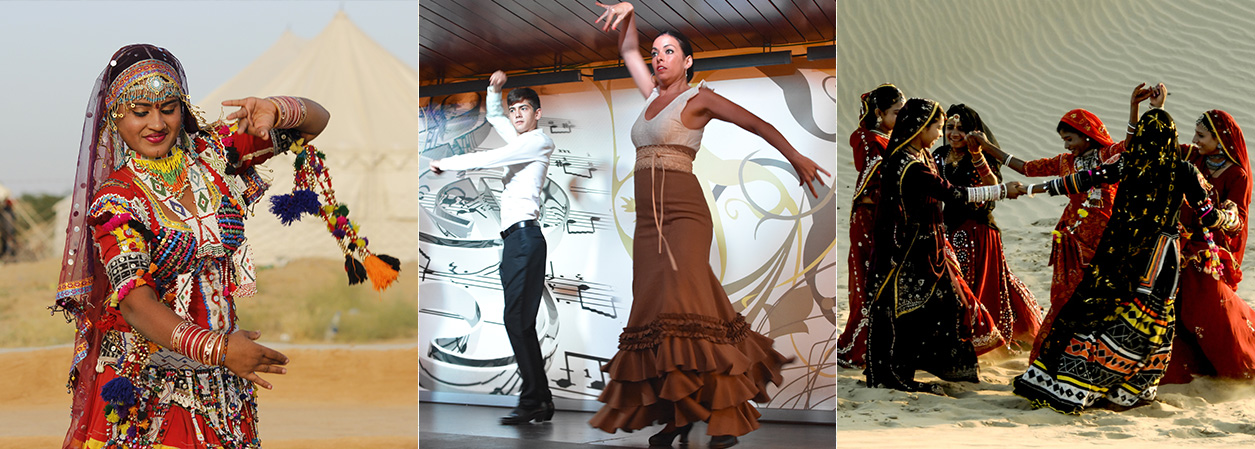
From Rajasthan to Spain – The Romani Roots of Flamenco
Did you know that anthropologists and historians believe that the origins of Flamenco, the energetic and sensuous dance of the Spaniards lay in the far away deserts of Rajasthan? It is believed that Flamenco music and dance came with the migrating Romani peoples from the deserts of Rajasthan who travelled through Spain on their way to Hungary in the 15th century CE. Similarities between the folk dances of Rajasthan such as Kaalbelia, the classical dance of Kathak, and Flamenco are undeniable even to the untrained eyes!
Historically speaking, the Romani people are believed to have originated in India and they then migrated to Europe through Spain, crossing Andalusia, Germany, and Hungary. They took with them their rich and colourful culture, heritage, songs, and dances, one of which evolved into what we know today as Flamenco. There are also striking similarities in the pirouettes and feet and hand movements of Kathak, the Indian classical dance and Flamenco. The flare of the costumes, the sheer energy of both dance forms, and so much more binds the Indian subcontinent culturally with the distant shores of Europe since centuries.
Write to your relationship manager for our Kaalbelia Dance Workshop in Rajasthan
Sustainability and Us
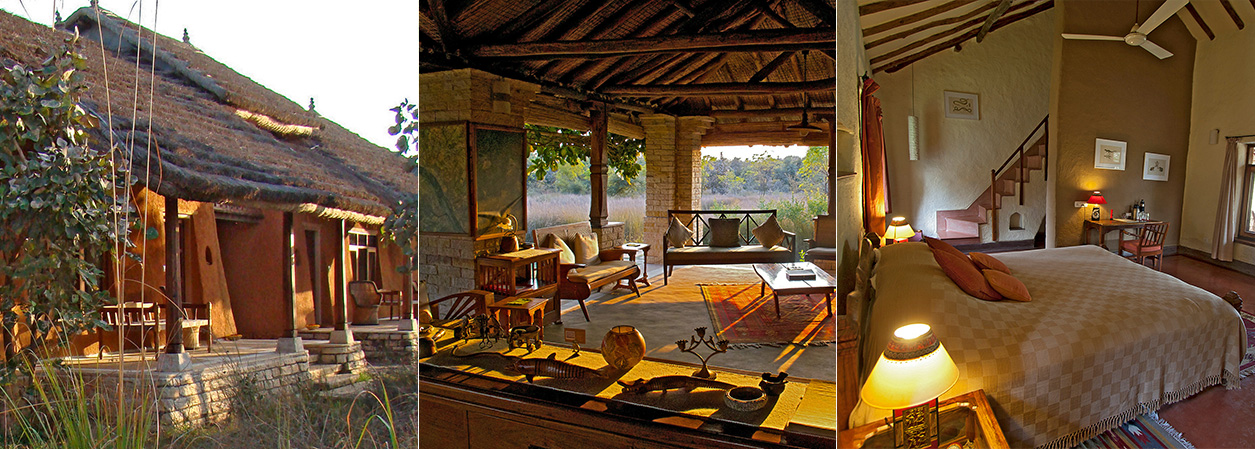
Travel Corporation India Ltd collaborates with RARE India
We are very happy to collaborate with RARE India to give away the RARE Conscious Travel Award – Hotel to Sarai at Toria for the concept, destination focus and sustainable initiatives. It was very interesting for us to contribute in evaluating the sustainability quotient of the shortlisted hotel partners based on our sustainability parameters.
From where they located themselves on the Ken to what they set out as design for The Sarai at Toria, Dr. Raghu Chundawat and Joanna Van Gruisen – owners of The Sarai at Toria never wavered from their focus of what they wanted to achieve with this eight-room boutique hotel near Khajuraho, close to Panna National Park. Community inclusive, treading softly on the environment around, building and healing, adopting renewable energy, earth friendly architecture, continuing to do business in the winter months to avoid air-conditioners and resorting to traditional methods for heating, and also being one of the first hotels to strongly work against pet-bottled water by insisting to a bewildered industry that the only serve RO water. In 2010, the year they opened – it was unheard of and was met with great resistance. Joanna and Raghu to this day are our early responders to a ‘sustainability’ solution challenge – advising the community on products and services that place planet before people.
Every activity at The Sarai at Toria is an effortless inclusion of nature and the heritage around telling a compelling destination story – to bring focus back to places like Ajaygarh and Kalinjar – from birding on the silken Ken River on a country made hand-rowed boat to walking through nearby villages.
Stay Tuned for our yearlong showcase of The Sarai at Toria’s incredible journey setting the blue print of what a responsible business in hospitality should look like.
Explore

Art of Travel Podcast
We are excited to announce the launch of our podcast – Art of Travel. Available on Spotify, the podcast is dedicated to the Indian sub-continent and will feature interviews with industry experts, discussions on the latest travel trends, destination news and insights. Through this podcast we aim to bring valuable information and knowledge to our business partners and help them stay up to date with the latest and more.
Festivals to Look Out For
Teej, Jaipur
19th to 20th August, 2023

Also known as Haryali Teej, this festival welcomes the monsoon season to North Western India. Teej is celebrated by married women who keep a fast during the festival for the well-being of the spouse and children. As part of the celebrations, women dress up in traditional attires and put henna on their hands and feet, bright green bangles are also worn on their wrists. Even unmarried women keep the fast during Teej, praying for a blissful marriage.
Stay at Rambagh Palace, Jaipur
Originally built in 1835, Rambagh Palace, has stepped gracefully through many royal transitions—from the home of the queen’s favourite handmaiden, to royal guesthouse and hunting lodge, and later as the residence of the Maharaja Sawai Man Singh II and his queen, Maharani Gayatri Devi. Today, Rambagh Palace offers 78 stunningly restored grand luxury rooms and suites in Jaipur which were the chambers of the former Maharaja. The palace retains its elaborate splendour, extravagantly decorated with hand-carved marble ‘jalis’ or latticework, sandstone balustrades, cupolas and ‘chattris’ or cenotaphs, and elaborate Mughal Gardens.
RESOURCES
SITE LINKS
CONTACT US
+ 91 (124) 4563000
Tower B, Delta Square, M.G. Road, Sector 25, Gurgaon - 122001, Haryana, National Capital Region of Delhi, India




